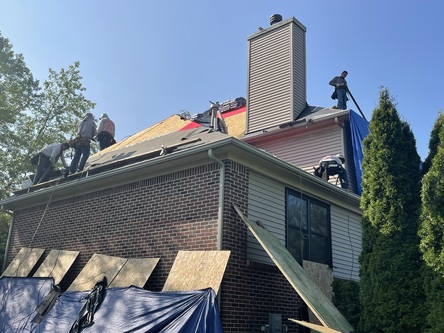How to Identify and Address Roof Leaks

Do you think your roof is letting in water during heavy storms?
Have you noticed mysterious water stains on your ceilings or walls, but can’t figure out where they were coming from?
A roof leak can be a frustrating and potentially costly problem. Fortunately, with a little knowledge and the right steps, you can effectively identify and address these issues.
Signs of a Roof Leak
The first step in addressing a roof leak is recognizing the signs. Common indicators include:
- Water Stains on Ceilings and Walls: Discoloration or yellowish/brownish patches and stains on your ceilings or walls are often the first visible signs of a leak.
- Mold and Mildew: Excess moisture can lead to mold growth. Check for musty odors or visible mold in your attic or on ceilings and walls.
- Missing or Damaged Shingles: Missing or cracked shingles can be a source of leaks. Inspect your roof for any visible damage.
- Flashing Issues: Flashing around chimneys, vents, and skylights can deteriorate or become loose, leading to leaks.
Locating the Leak
Once you've identified signs of a leak, you need to find its source. Follow these steps:
- Inspect the Attic: Check the attic for signs of water infiltration. Look for wet spots, water stains, or mold on the rafters and insulation.
- Examine the Roof Surface: From the ground or using a ladder, inspect the roof for missing, damaged, or curling shingles. Pay close attention to areas around vents, chimneys, and skylights. Also, ensure that flashing around chimneys, vents, and skylights is intact and properly sealed. Look for gaps or signs of deterioration.
Addressing Roof Leaks
Once you’ve pinpointed the source of the leak, you can take steps to address it:
- Patch Minor Leaks: For minor leaks, you can use roofing sealant or caulk to seal small gaps or cracks. Clean the area and apply the sealant according to the manufacturer's instructions.
- Replace Damaged Shingles: If you find missing or damaged shingles, replace them with new ones. Lift the damaged shingle, remove nails, and slide a new shingle into place, securing it with roofing nails.
- Repair Flashing: If the flashing is damaged or loose, it may need to be resealed or replaced. Remove the damaged flashing, apply roofing cement, and install new flashing as needed.
When to Call a Professional
While some minor roof repairs can be handled DIY, significant leaks or extensive damage require professional attention. Contact a local roofing expert if:
- The Damage is Extensive: A professional should evaluate and repair large or complex leaks to ensure comprehensive and long-lasting solutions.
- You’re Unsure of the Source: If you can’t locate the source of the leak, a professional roofer can use specialized tools to pinpoint the problem.
- Safety Concerns: Roof work can be dangerous, especially if you’re uncomfortable working at heights. A professional can safely perform repairs and ensure quality workmanship.
Don’t Let a Leak Kill Your Roofing Ann Arbor
Think you have a leak?
Identifying and addressing roof leaks allows you to maintain the integrity of your home. By watching for common signs of leaks and taking swift action to address them, you can prevent costly damage and extend the life of your roof.
Contact our team today for your roofing in Ann Arbor needs.
